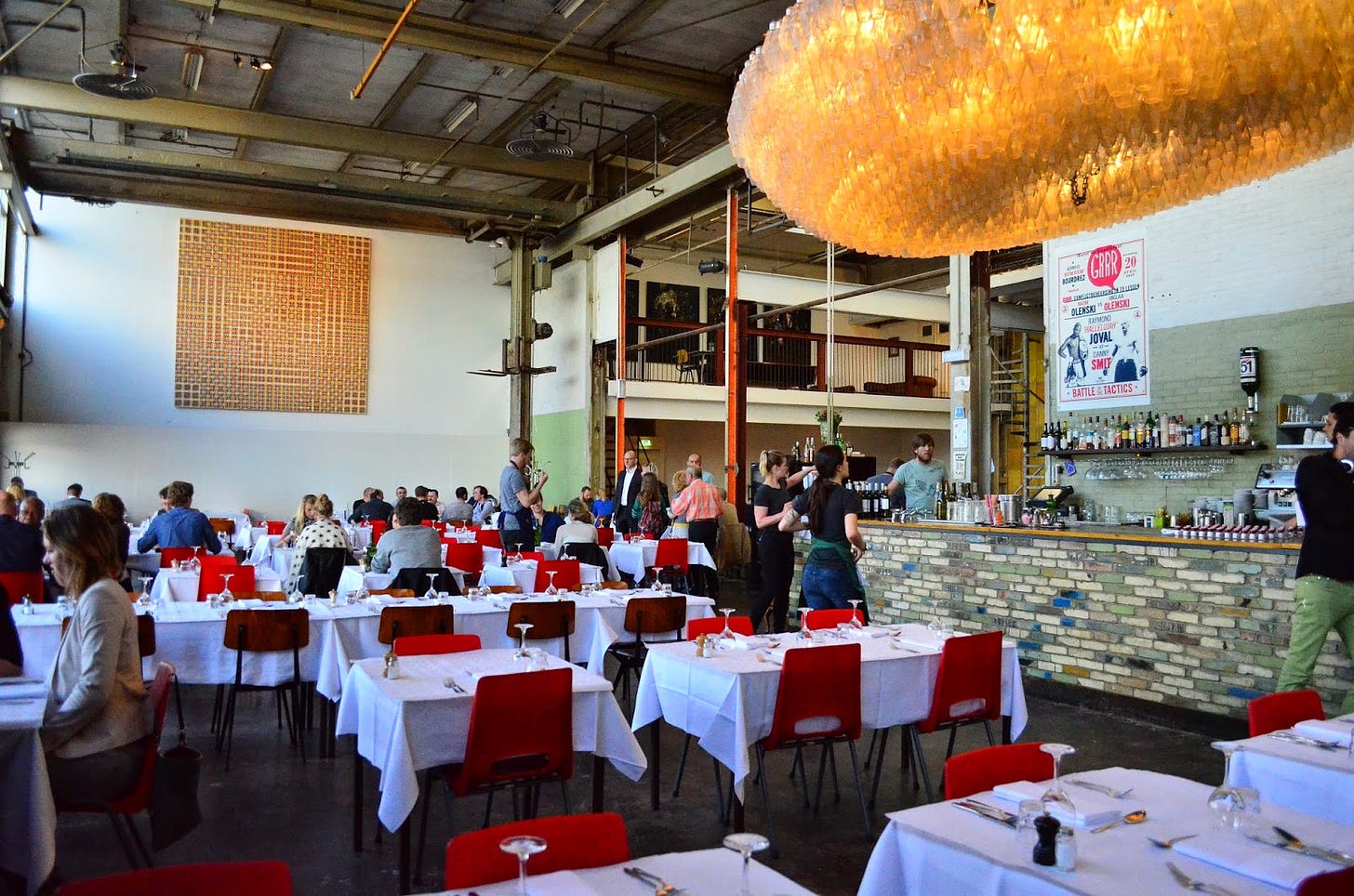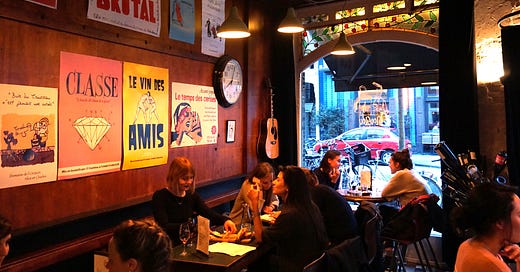Amsterdam goes natty, without the geeks
A slightly shorter, amended version of this article appeared last year in Meininger's Wine Business International, issue 2.

It’s neither a hotel, nor is there a golden pheasant on the premises. But those are the least baffling facets of Amsterdam’s Hotel de Goudfazant.
Located on a scruffy industrial estate in trendy “Noord” (across the river from the city centre), the huge warehouse space is one of the city’s most successful restaurants ever, packed since opening in 2006, and serving around 300 covers every Saturday night. Most surprising is what gets poured into all those thirsty mouths. Goudfazant sits at the heart of Amsterdam’s fast developing natural wine scene, having switched its entire list in late 2014.
The other surprise is that Goudfazant achieved its ascendancy in flagrant disregard of almost everything in the unspoken HoReCa rulebook, as co-owner Niels Wouters explains. “We decided right from the start that we wouldn’t make agreements with any standard suppliers”, he states…
Keep reading with a 7-day free trial
Subscribe to The Morning Claret to keep reading this post and get 7 days of free access to the full post archives.




